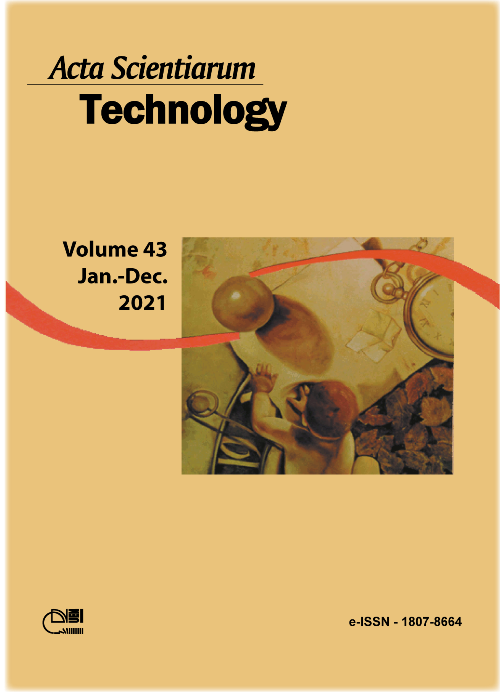Agro-industrial waste as a source of bioactive compounds: ultrasound-assisted extraction from blueberry (Vaccinium myrtillus) and raspberry (Rubus idaeus) pomace
DOI:
https://doi.org/10.4025/actascitechnol.v43i1.55567Keywords:
Eco-friendly; experimental design; antioxidant analysis; anthocyanins.Abstract
Blueberry and raspberry pomace are a rich source of bioactive compounds that have not been commercially utilized yet, and ultrasound-assisted technology can efficiently extract these compounds. Also, the use of water as a solvent added to the ultrasound-assisted technology improves this eco-friendly process. Therefore, an aqueous eco-friendly extraction, including extraction time and ultrasound presence or absence (conventional extraction) was performed in order to extract bioactive compounds from blueberry and raspberry pomace. Response parameters included levels of anthocyanins, phenolic compounds, and flavonoids, and antioxidant activity determined by DPPH, ABTS, and FRAP methods. Analysis of variance results indicated that ultrasound-assisted extraction for 45 min. was feasible to extract the bioactive compounds. The antioxidant content of the extract obtained by the ultrasound-assisted process was 1.4 times higher on average and the total phenolic concentration was 1.6 times higher (for blueberry 5.02 and for raspberry 2.53 mg gallic acid equivalent/g) compared with those obtained by the conventional process. Thus, the ultrasound-assisted extraction method can be a profitable alternative to extract bioactive compounds from blueberry and raspberry pomace, as it is energy efficient, requires fewer chemicals, and produces less effluent. This eco-friendly technology is therefore viable for food, nutraceutical, and cosmetic industries, and also for reducing food waste.
Downloads
Downloads
Published
How to Cite
Issue
Section
License
DECLARATION OF ORIGINALITY AND COPYRIGHTS
I Declare that current article is original and has not been submitted for publication, in part or in whole, to any other national or international journal.
The copyrights belong exclusively to the authors. Published content is licensed under Creative Commons Attribution 4.0 (CC BY 4.0) guidelines, which allows sharing (copy and distribution of the material in any medium or format) and adaptation (remix, transform, and build upon the material) for any purpose, even commercially, under the terms of attribution.
Read this link for further information on how to use CC BY 4.0 properly.



















8.png)




